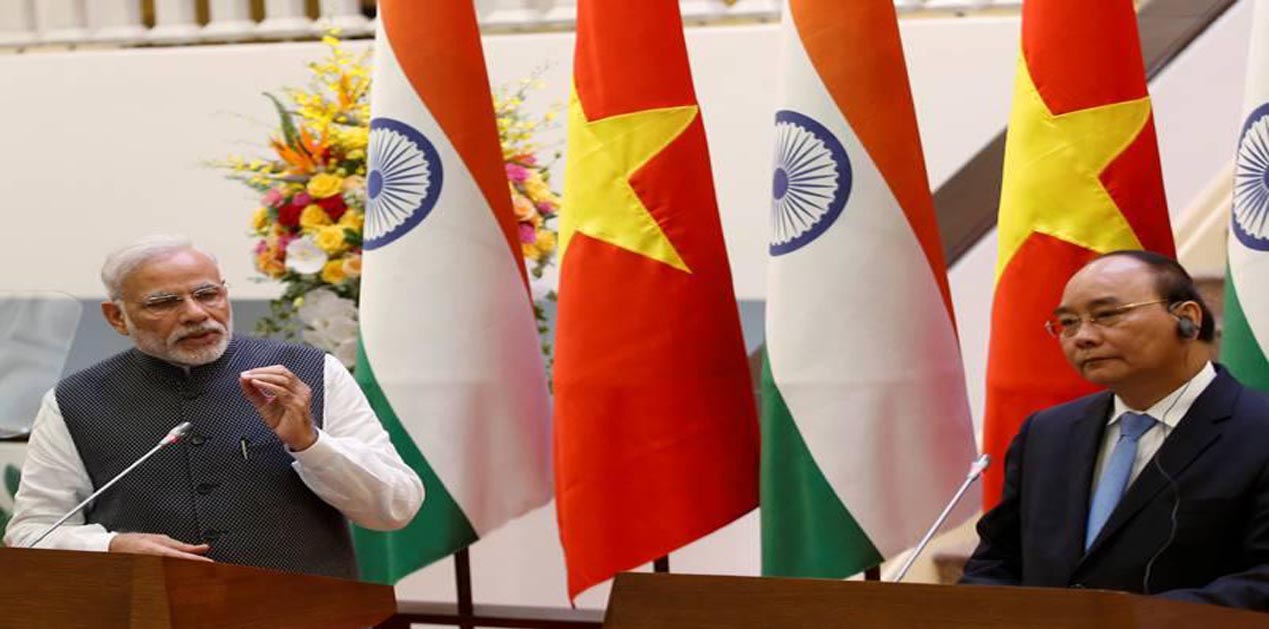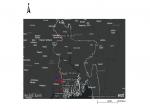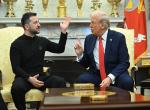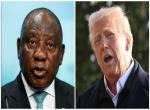“We realise that our efforts to bring economic prosperity to our people need to be accompanied by steps to secure them. Prime Minister and I have, therefore, agreed to deepen our defence and security engagement to advance our common interests. The agreement on construction of offshore patrol boats signed earlier today is one of the steps to give concrete shape to our defence engagement. I am also happy to announce a new Defence Line of Credit for Vietnam of US$ Five Hundred million for facilitating deeper defence cooperation. The range of agreements signed just a while ago point to the diversity and depth of our cooperation.” -PM Narendra Modi, September 03, 2016 on his visit to Vietnam
Looking Back
It is axiomatic that any defence and strategic relationship between two countries has to occur in a political context. Since the establishment of diplomatic relations in 1972 the Indo-Vietnam political, strategic and economic relations have been on an upward trajectory. Particularly, the defence and security cooperation has become multi-faceted and has acquired a momentum of its own. The name of Gen Vo Nguyen Giap is well known among not only Indian military circles but also among international military historians and strategists. General Giap defeated the French Army’s elite and its Foreign Legion at Dien Bien Phu in May 1954, leading to eviction of France from Indochina and earning accolades from almost the entire international community. Military lessons learnt from the defeat of French forces at Dien Bien Phu in 1954 are still taught in Indian military academies and institutions. The Vietnamese forces also defeated the might of the US military in 1975. If that was not enough, the Vietnamese military and the nation also thwarted the assault of the Chinese military in 1979 thus teaching them a lesson.
India has been in the forefront in supporting Vietnam in its anti-colonial and its nation building struggle. India had supported Vietnam in its nationalist war against the United States. While South East Asian nations had approached India as early as 1967 to join the ASEAN, India remained lukewarm to their overtures because of overall geopolitical situation in the region and the ongoing Cold War redux in Indo-China at that time. India was identified as more on the side of Vietnam and Russia even though it was part of the non-aligned block. Following the unification of both the Vietnams India supported Vietnam’s policy in Cambodia as against China’s backing of Khmer Rouge regime. Such pro-Vietnam policies of India did not go down well with some of the South East Asian countries. This only goes to show that India valued its ties with Vietnam and Russia more than developing its relationships with the ASEAN countries. Evidently, there was a geo-strategic logic also in India’s policies as New Delhi was concerned about China expanding its influence in the South East Asian region. In fact, that consideration continues to propel India in expanding its strategic relationship with Vietnam over last four and half decades or so.
The end of Cold War in 1990’s was another period for India to have a fresh look at its policies in South East Asia in general and Vietnam in particular. India considered the South East Asia region as its extended neighbourhood. In consonance with domestic economic reforms India also unveiled its Look East Policy in 1992. While the initial impulse of the Look East Policy was economic integration with its neighbouring countries, over time it acquired strategic content also. Because of the changing geo-strategic and geo-economic environment India also joined the ASEAN to expand its political, economic and strategic engagement with the ASEAN countries.
However, during all these years when new strategic equations were being evolved in South East Asia the traditional relationship between India and Vietnam was further strengthened. The profound changes in the strategic environment, in fact, brought India and Vietnam closer because of their shared interests and security perceptions. Vietnam became an important cog of India’s Look East Policy. Vietnam supported India’s policy of deepening its relations with the ASEAN and joining ASEAN Regional Forum and East Asian Summit. Vietnam also supported India’s sub-regional connectivity efforts like the Mekong Ganga Cooperation formed in 2000. Evidently, this was in competition to China dominated Greater Mekong Sub-region Cooperation initiative.
The South China Issues and India-Vietnam Cooperation
Rise of China accompanied by its assertive and aggressive policies in the region have compelled the nations in the region to come together and respond to the arising challenges to their security. China’s unreasonable maritime claims in the South China Sea have created an unstable security environment in the South East Asian region. It also needs to be noted that the Indian warship Airavat was challenged by the PLA Navy in September 2012 while on passage from Vietnam, which reinforced the need for India to enhance maritime cooperation and interoperability with the Vietnamese. China’s placing of its giant drilling rig HD-981 in May 2014 within the Exclusive Economic Zone (EEZ) of Vietnam, in fact on Vietnam’s continental shelf was in line with Chinese assertive and aggressive policies being pursued in South China Sea (SCS).
Despite the July 2016 ruling by the Permanent Court of Arbitration in Hague China has not abandoned its muscular and assertive policies. Vietnam along with the other affected counties have been engaging China both bilaterally and multilaterally to find a way out of the impasse. India on its part has been supporting freedom of navigation and over flight, and unimpeded commerce, based on the principles of international law, as reflected notably in the United Nations Convention on the Law of the Sea (UNCLOS). India has advocated that States should resolve disputes through peaceful means without threat or use of force and exercise self-restraint in the conduct of activities that could complicate or escalate disputes affecting peace and stability. India shares similar views as Vietnam on the SCS; even though China has objected to India’s exploration of oil within in its maritime EEZ India has continued with its exploration and in fact, the exploration is being extended to another block in the coastal waters.
The SCS is the principal waterway through which our naval ships access the Pacific. Chinese claims over waters of the SCS would impact India directly if they start enforcing their sovereignty claims. Secondly, historically and culturally the SCS (and Southeast Asia) have been part of the civilisational footprint of India. Any Chinese dominance of the SCS would deny us the space to pursue our Act East Policy effectively. It must therefore be India’s objective to ensure that the SCS remains 'maritime commons' and the new equilibrium that emerges in the region after the current period of transition does not put us at a serious disadvantage. Thirdly, defence facilities being developed by China on the reclaimed land, including airfields that can support the largest military aircraft, have the potential to bring the Chinese Navy and Air Force uncomfortably close to us. PLA Navy has talked about “Far Seas” capabilities with increasing presence of Chinese warships in Indian Ocean region.
In geo-strategic terms, India and Vietnam are highly dependent on sea for their economic vitality. Their geo-graphical location bestows on them the responsibility to safeguard international shipping routes in the Indian Ocean and Pacific Ocean, including the South China Sea. India’s Maritime Military Strategy of 2015 as also the earlier version of 2007 has described SCS as an area of strategic interest to India. New Delhi is a stakeholder in evolving security developments in East Sea/SCS and therefore the imperative for India and Vietnam to forge ties at the political and security levels.
Forging of Defence and Security Ties
The formal framework of India-Vietnam defence security cooperation is based on on defense cooperation signed by India’s then Defense Minister Mr. George Fernandes on a visit to Vietnam in 2000. Training of Air Force pilots, joint naval and coast guard and naval exercises and regular dialogue at Defence Ministers’ level were institutionalised then. This was further strengthened by the July 2007 Strategic Partnership Agreement which now provides the framework for furtherance of cooperation in the defense field. The Agreement committed both the countries to strengthening their relations in the political, security, defence, cultural, science and technological fields. Civil nuclear cooperation, enhancing regional security, counter terrorism cooperation, including meeting the challenges of transnational crimes and drug trafficking formed part of the strategic partnership. Since the current government took over in May 2014 there has been acceleration of engagement between the two sides which also indicates to an extent the concerns of both sides regarding the situation in the South China Sea.
President Pranab Mukherjee visited Vietnam in August 2014 just before President Xi was to visit India. The seven agreements that were signed with Vietnamese counterpart Truong Tan Sang focused largely on deepening strategic partnership; the agreements covered such as political, defence and security cooperation, economic cooperation, science and technology, culture and people-to-people links, technical cooperation and multilateral and regional cooperation. Both leaders agreed that defence and security cooperation was an important pillar of the strategic partnership between the two countries. Later on during PM Nguyen Tan Dung to India in October 2014, PM Modi observed that “Our defence cooperation with Vietnam is among our most important ones. India remains committed to the modernisation of Vietnam’s defence and security forces. This will include expansion of our training programme, which is already very substantial, joint-exercises and cooperation in defence equipment.”
Earlier, Smt. Sushma Swaraj, External Affairs Minister of India had visited Vietnam in August 2014. Swaraj had observed while speaking in Vietnam that it was time to replace India's “Look East policy”, that aims to link the country's northeast with South East Asia, with an “Act East Policy.” Further, just before Sushma Swaraj’s visit Vietnam had renewed India's lease of two oil blocks in South China Sea, evidently a move that was not liked by China. The institutional architecture for strengthening partnership include Joint Commission Meeting at Foreign Ministers’ level, the Foreign Office Consultations and Strategic Dialogue at Secretary level, Security Dialogue and Annual Defence Dialogue at Secretary level and other dialogue mechanisms between the two countries.The Annual Security Dialogue at Defence Secretary level is being held regularly and it has gained considerable traction.
In May 2015, Defence Ministers of the two countries signed a "Declaration of common vision on defence ties Vietnam - India period 2015-2020” and witnessed the signing of a MoU between Vietnam and the Indian Coast Guard Forces on coordinating crime prevention efforts and the development of transnational cooperation. The agreement has provisions for renewal after a mutual review of the cooperative steps taken during the period. The five year Joint Vision statement builds on the earlier mechanisms and processes between the two nations for elevating the defence and security relationship. The Joint Vision statement has imparted further momentum to India-Vietnam’s expanding defence and strategic ties. India’s National security Advisor, Mr. Ajit Doval was in Vietnam in April 2015 where he affirmed that India would do all it can to assist Vietnam in defence and security, specifically defence industry, military technology, intelligence, personnel training, cyber crimes and cyber security.
The Indian Armed Forces have been engaged with the capacity building of the Vietnamese Armed Forces particularly the Navy. The areas of focus have been training, repairs and maintenance support, exchanges between think tanks, study tour and ship visits. India has already been providing assistance to Vietnam’s navy through training to operate the new Russian-built submarines. Vietnam has been steadily increasing its efforts to have a credible defence sector – mostly as deterrence against China’s rise and its aggressive moves in the South China Sea. India, with its increasing indigenous capabilities in defence production can do more to support development of defence industry in Vietnam.
PM Modi’s Visit to Vietnam in 2016 and Defence and Security Aspects
During PM Modi’s visit to Vietnam in September 2016, India and Vietnam formally upgraded their relationship to ‘Comprehensive Strategic Partnership’ which in fact paid enhanced attention to evolving bilateral defence and security ties. The upgraded partnership is designed to provide a new direction, momentum and substance to the bilateral cooperation. The common efforts of both the countries are expected to contribute to stability, security and prosperity in this region. Both sides also underlined their commitment to effectively implement the Joint Vision Statement in India-Vietnam Defence Relations of May 2015. During the visit India provided the biggest defence line of credit of US 500 million dollars so far. EarlierIndia had offered a $100 million line of credit for patrol boats. The $100 million LoC is being utilised to build Offshore Patrol Vessels for Vietnam’s Coast Guard construction of which has been contracted to Indian firm Larsen and Toubro. India is also helping out in the construction of an Army Software Park at the Telecommunications University in Nha Trang as announced during PM Modi’s visit.
An MOU has also signed between the two sides to establish a Vietnam-India Centre for English Language and Information Technology Training at the Telecommunications University, Ministry of Defence of Vietnam. The Centre will provide a permanent venue for teaching English language and information technology for raising the general level of proficiency of trainees in these skills. It shall train and upgrade the skills of English language teachers from schools and training institutions of the armed forces and also prepare students for tests essential for tertiary education. It will strive to develop into a Centre for Excellence while at the same time; collaborate with other Centres of English and IT education set up in Vietnam with the assistance of the Government of India.
Space and Cyber Security Cooperation
During PM Modi’s visit in September last year, the countries signed another important pact – the Inter-Governmental Framework Agreement for the Exploration of Outer Space for Peaceful Purposes. This would also enable in downloading images from outer space to provide real time picture of activities in Vietnam’s areas of Interest. Vietnam has already been chosen as the location for establishing an Indian Space Research Organisation (ISRO) satellite tracking centre, however the project is under the aegis of the ASEAN-India initiative and not a bilateral arrangement. Further, a MOU on cyber security between Ministry of Public Security of Vietnam and Ministry of Electronics and Information Technology of India and the transfer of equipment to the Indian funded Indira Gandhi High-Tech Crime Laboratory has also been signed. Both sides have agreed to conclude a pact between their national security councils and set up a dialogue at the deputy ministerial level that would enhance cooperation on traditional and non-traditional security issues, cyber security, counter-terrorism, transnational crimes, disaster management and response, and undertaking training and capacity building programmes.
Widening of Defence Cooperative Framework
All these steps could be seen as gains and achievements in a very graduated manner for deepening and widening of the defence and security cooperation. This was reflected in Joint Statement made on the conclusion of PM Modi’s visit which expressed satisfaction at the significant progress made in defence cooperation, including exchange of high level visits, annual high-level dialogue, service-to-service cooperation, naval ship visits, extensive training and capacity building, defence equipment procurement and related transfer of technology, and cooperation at regional fora such as the ASEAN Defence Ministers' Meet –Plus Eight (ADMM-Plus).
It is well known that India has been providing spares for some Russian-origin equipment to the Vietnamese Navy and also basic training in submarine operations. For instance India has supplied spares for the Russian-origin Petya class warships and OSA-II class missile boats of the Vietnamese Navy. Vietnam has acquired three modern versions of the Kilo class submarine, much advanced though than what the Indian Navy had acquired over two decades back. Vietnamese sailors are being trained in submarine warfare or ‘underwater combat training’ at the Navy's submarine school INS Satavahanain, Visakhapatnam, since October 2013. This includes training in submarine warfare doctrine and tactics. Indian naval ships have been regularly making port calls in Vietnam and showing their flag to indicate the right of passage and freedom of navigation in the international waters. In so far as Indian Air Force is concerned there are also plans to provide training for Vietnamese Air Force pilots for flying Sukhoi fighters. Capacity building of Vietnam Armed Forces for improving the security environment is one of the major goals to be achieved.
To build upon and continue with the rapid pace of evolving defence and security relationship the then Indian Air Force’s (IAF) Air Chief Marshall, Arup Raha (he was also Chairman, Chiefs of Staff Committee) was in Hanoi in middle of September 2015 to discuss military cooperation with Vietnamese counterparts. Though maritime security has been dominant theme of Indo-Vietnamese cooperative mechanisms Anup Raha’s visit reflected widening of agenda of strategic cooperation.
At the multilateral level India has also become member of ADMM-Plus. The basic objective of creating this framework was to bring about co-operative security, especially in the areas of humanitarian assistance, disaster relief, maritime security, counter-terrorism and peace keeping operations. ADMM-Plus Eight has also proposed furthering of bilateral and multilateral dialogue and sharing of expertise among the military forces of member states. The arrangement also to counter particular threats and issues such as piracy and natural disaster through joint military exercises. Vietnam and India both as members of this mechanism have been supporting this multilateral initiative and coordinating their activities. India and Vietnam have also co-chaired the Expert Working Group on Humanitarian Mine Actions in the ADMM-Plus forum.
Looking Ahead
While the pace of India-Vietnam defence and strategic cooperation has acquired some traction over the years the potential for the relationship remains under exploited. This is especially so when India looks at the countries in its neighbourhood where China has been able to forge extensive relationships in the defence and security spheres. Recently, some of the Indian Defence Public Sector Undertakings have announced their intentions of defence exports. For instance Bharat Dynamics Limited (BDL) is going to be in the market to export a variety of anti-tank guided missiles (Konkur and Milan ATGMs) and surface to air missiles (Akash missile systems) etc. BDL is said to be in preliminary discussions with various countries including Vietnam to tap the export potential of the weapon systems. According to a report India has identified 15 weapon systems for exports including Astra beyond-visual range air to air missiles, Prahar surface to surface missiles, light combat aircraft (LCA), BrahMos supersonic cruise missile, SONARs, Arjun Mk-2 battle tanks, airborne early warning systems, battlefield radars and a variety of unmanned systems. Last year Defence Minister had stated that 10 percent of missile systems may be exported. One estimate suggests that India could export defence equipment worth about 2 billion USD per year to start with.
With this as background, plus reflecting on the evolving multifaceted engagement with Vietnam, following are some of recommendations that merit attention.
(a) India and Vietnam could cooperate with each other to develop Vietnam’s indigenous defence sector especially where India has strengths.
(b) Meanwhile, India should consider for export to Vietnam a variety of missile systems (including various versions of BrahMos Cruise missile) besides Unmanned Aerial Vehicles (UAV) and other defence systems and weapons as earmarked by India for export. Dornier surveillance aircrafts, mini UAVs, upgraded T-72 tanks and indigenously manufactured Artillery equipment depending on Vietnam’s requirements could find place on the export list.
(c) Sharing of intelligence would add to intensification of strategic relationship.
(d) Conversion training of SU-30 pilots of the Vietnam Air Force.
(e) As full complement of Russian Kilo class submarines is still to be inducted, therefore continued training of Vietnamese submarine crew would be necessary.
(f) Support the Vietnam forces in establishing and development of its C4ISR (Command, Control, Command, Computers, Intelligence, Surveillance, Reconnaissance) systems.
Conclusion
In the last 45 years of establishing of our diplomatic relations and in ten years of our strategic partnership a considerable amount of progress has been made but the full potential is yet to be realised. Given the fast changing and uncertain strategic dynamics in the region both countries share common perceptions on the nature of both traditional and non-traditional threats and challenges to the security, therefore, cooperation between the two is an imperative. While economic development remains a priority for both the development of defence capabilities is also a must and therefore coordination of both the efforts is inescapable. The overall objective of India-Vietnam defence and strategic partnership would be to continue to contribute towards maintaining peace and stability in the region both at bilateral and multilateral level.
While India, Vietnam and other nations in the region have been in a strong economic relationship with China they remain wary of China’s growing assertion and irredentist tendencies. India’s efforts in its defence cooperation with Vietnam and ASEAN members both as part of multilateral and bilateral efforts also aims at addressing its own strategic concerns both in Indian Ocean littoral as well as in SCS.
Both Ministry of Defence and Ministry of External Affairs need to coordinate their efforts in order to add meaningful substance to the evolving defence and security relationship with Vietnam and ASEAN members as part of a composite endeavour to achieve success in the strategic objectives of its Look East, and now Act East Policy. Possibilities of trilateral between say India, Vietnam and US or for that matter one between Japan, India and Vietnam on the same format and basis as the existing trilateral between India, US and Japan need to be explored.
Endnote
i. This is an updated version of the paper presented at Ho Chi Minh Academy of Political Science, Hanoi, Vietnam during an international conference in March 2017
Image Source: http://www.dnaindia.com











Post new comment